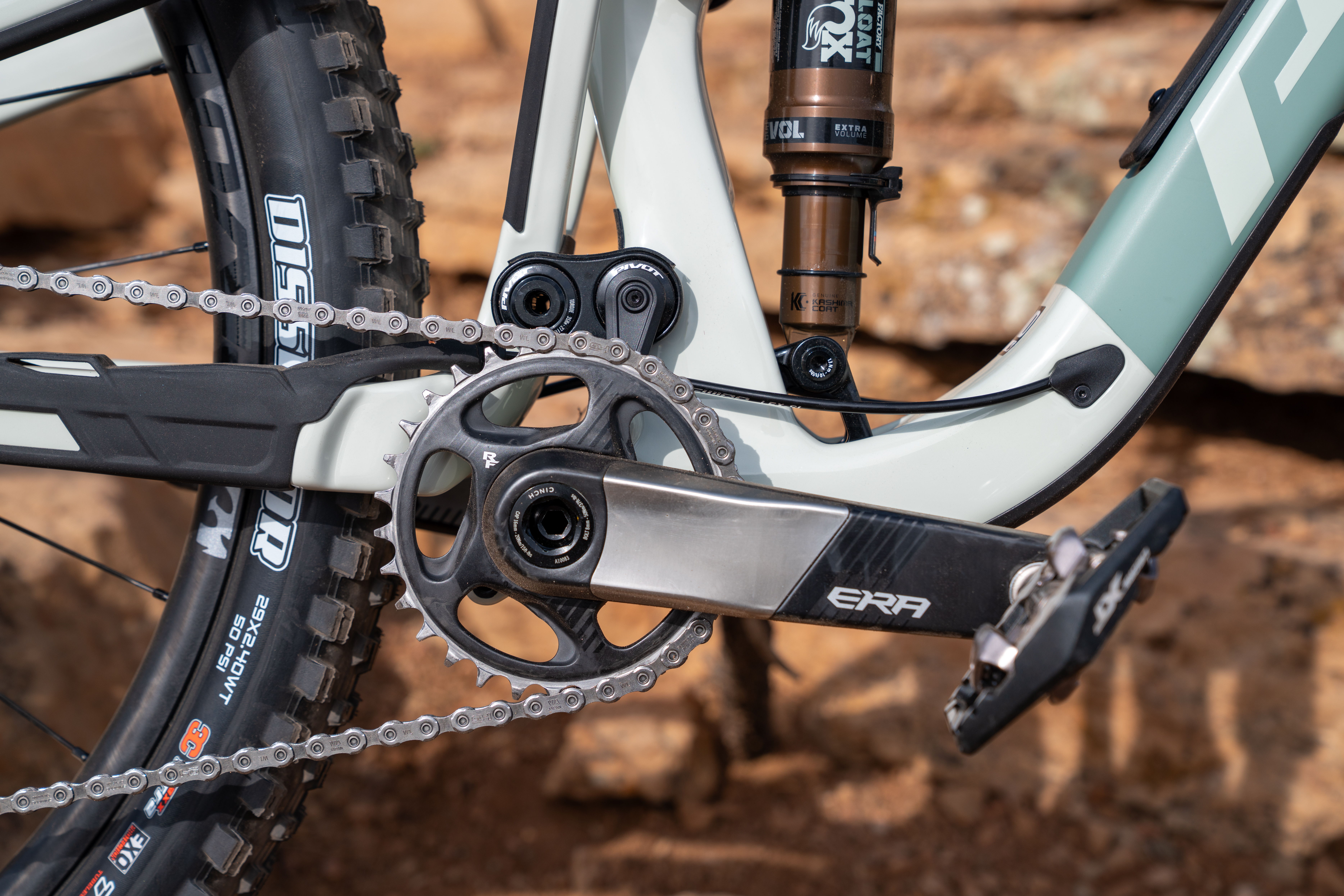
Short crank arms are sweeping the mountain bike industry, with brands, bike fitters, and riders alike claiming they provide numerous benefits. Experts claim that shorter cranks can reduce knee and hip pain, increase acceleration, improve descending performance, and reduce pedal strikes.
While many savvy riders have taken the initiative to install shorter aftermarket cranks, others may have begun riding shorter cranks without even knowing it. Historically, mountain bike cranks measured 175mm in length, but now, many brands are speccing shorter cranks by default — especially on smaller bike sizes. For instance, my size-medium 2024 Pivot Switchblade shipped with 170mm cranks — already 5mm shorter than what might have been specced previously.
Even so, I decided to take things a step further and put the new trend to the test by reducing my crank length to 160mm. To do so, I installed Race Face’s all-new Era cranks on my 2025 Pivot Trailcat SL.
After over 400 miles of riding, here’s what I’ve learned about both the Race Face Era and short cranks in general.
- Race Face Era mountain bike crankset key specs
- Out on the trail
- You don’t realize how much pedal strikes suck until they’re gone
- Faster acceleration is readily apparent, with no noticeable side effects
- Short cranks keep your hip more open at the top of the pedal stroke
- Do shorter cranks reduce knee pain? Test is inconclusive.
- Pros and cons of the Race Face Era mountain bike crankset
- Bottom line
Race Face Era mountain bike crankset key specs
- Carbon crank arm
- Stainless steel wear plate guards
- Arm lengths: 160, 165, 170, and 175mm
- Spindle diameter: 30mm
- Claimed weight: 499g (includes 170mm arms, 32T chainring, crank boots, pedal washers, and hardware)
- Price: $499
- Proprietary carbon chainring ($149) and bottom bracket ($60) sold separately
- Buy from Jenson USA
The Race Face Era cranks are a sculpted expression of elegant performance. The beautiful carbon cranks are paired with a stainless steel wear plate, which not only eliminates carbon wear but also adds a shiny aesthetic touch. The crank pairs with its own proprietary carbon chainring featuring stainless steel teeth, providing a perfectly matched aesthetic and a lightweight, resilient driver.
While this review focuses on the shortest Era crank available, note that these cranks are sold in 160, 165, 170, and 175mm sizes. The proprietary chainrings are currently sold in 30, 32, and 34T options.
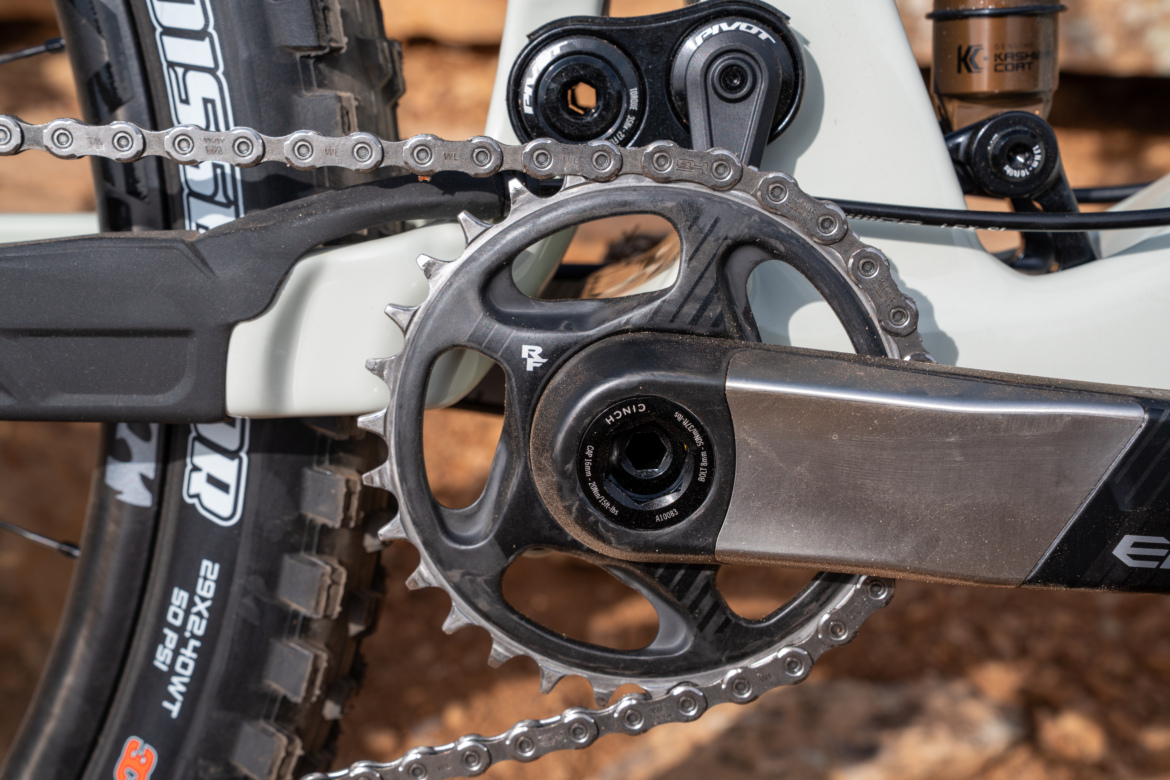
While the Era crank lists a $499 MSRP, note that in order to achieve the correct chainline with the Era’s 136mm spindle length, you must purchase an Era chainring, which provides the proper offset. Race Face claims the $149 chainring “is expected to last five times as long as a typical alloy ring for less than twice the cost.” The bonded carbon-stainless steel chainring purportedly provides the lifespan of steel with the weight of aluminum.
In addition, the Era features a 30mm spindle diameter, and if you’re upgrading from most Shimano drivetrains, you’ll also have to factor in the price of a new bottom bracket, too. This brings the total upgrade cost to $708.
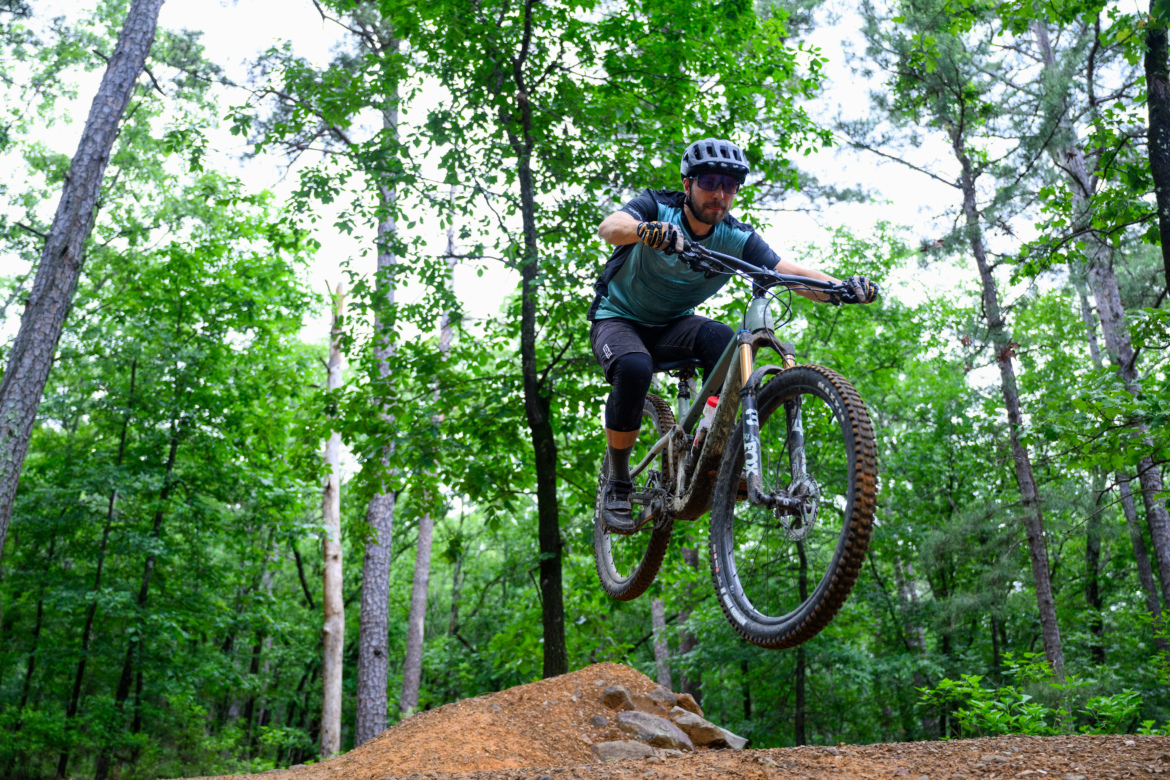
Out on the trail
In a word, the performance of the Race Face Era crankset has been flawless. The cranks spin up to speed quickly, providing instantaneous power transfer. There’s no noticeable play in any direction — the cranks provide precise control the instant you need it.
The durability has been top-notch, with only small scuffs on the carbon from a few glancing impacts. The rubber boots have taken the brunt of the few pedal strikes I’ve experienced, and the stainless-steel plates have proven to be perfectly positioned to absorb any shoe rub.
Share your Race Face Era mountain bike crankset review
Of all the features incorporated into the Era, the stainless steel plates seem to be the most ingenious. The bonded carbon fiber and stainless steel construction is used in both the crank arm and chainring to great effect. By focusing the majority of the wear and tear on a highly durable material like steel but then reducing the overall weight with carbon, Race Face is truly providing the best of both worlds.
So the Race Face Era provides fantastic performance regardless of crank length, albeit at a price. But how do the shorter cranks measure up?
During my 400+ miles of testing, I found that shorter cranks provided two major benefits, one minor benefit, and an inconclusive result — but with no visible downsides.
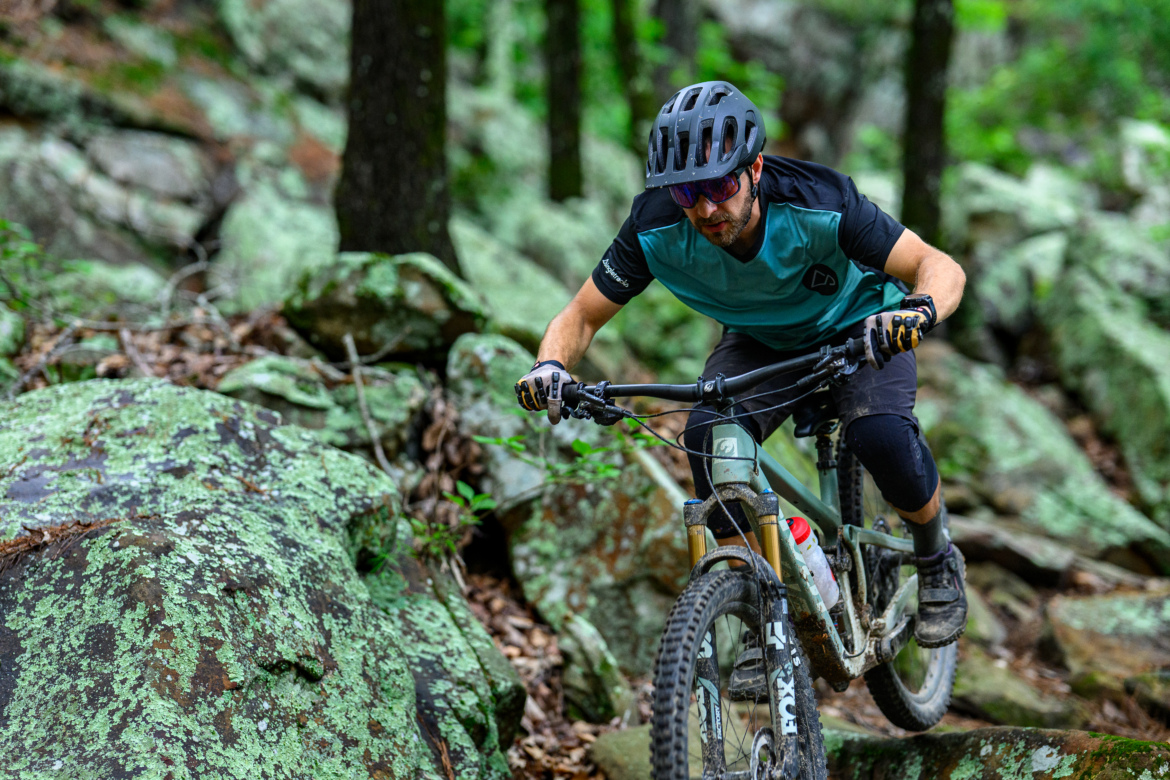
You don’t realize how much pedal strikes suck until they’re gone
There are few things worse than cranking up a steep, boulder-strewn trail and accidentally pegging an awkward rock with the bottom of your crank arm, jolting you off balance and potentially causing a crash. That painful experience can only be topped by ripping downhill at high speed and catching a pedal on a hidden stump or rock, catapulting you over the front and pile-driving your sorry carcass into the ground. Just such an experience in 2024 proved to be my worst crash in years.
Slow-speed pedal strikes and high-speed pedal catches have two things in common: ground clearance. In the first instance, you’re generally moving the cranks through space, while in the second, they’re often stationary. But in both instances, having the pedal or crank hit the ground or an obstacle can cause you to have a really bad time.
Of all the purported benefits of shorter crank arms, this is the #1 benefit that I experienced during testing. I didn’t realize how much even small pedal strikes sucked until I dramatically reduced their occurrence. I say “reduced” not “eliminated” on purpose, as there’s no way to ever truly eliminate pedal strikes. But of all the possible solutions, shorter crank arms appear to be the best one with the fewest downsides. (Unlike increasing bottom bracket height, which brings with it dramatic handling downsides.)
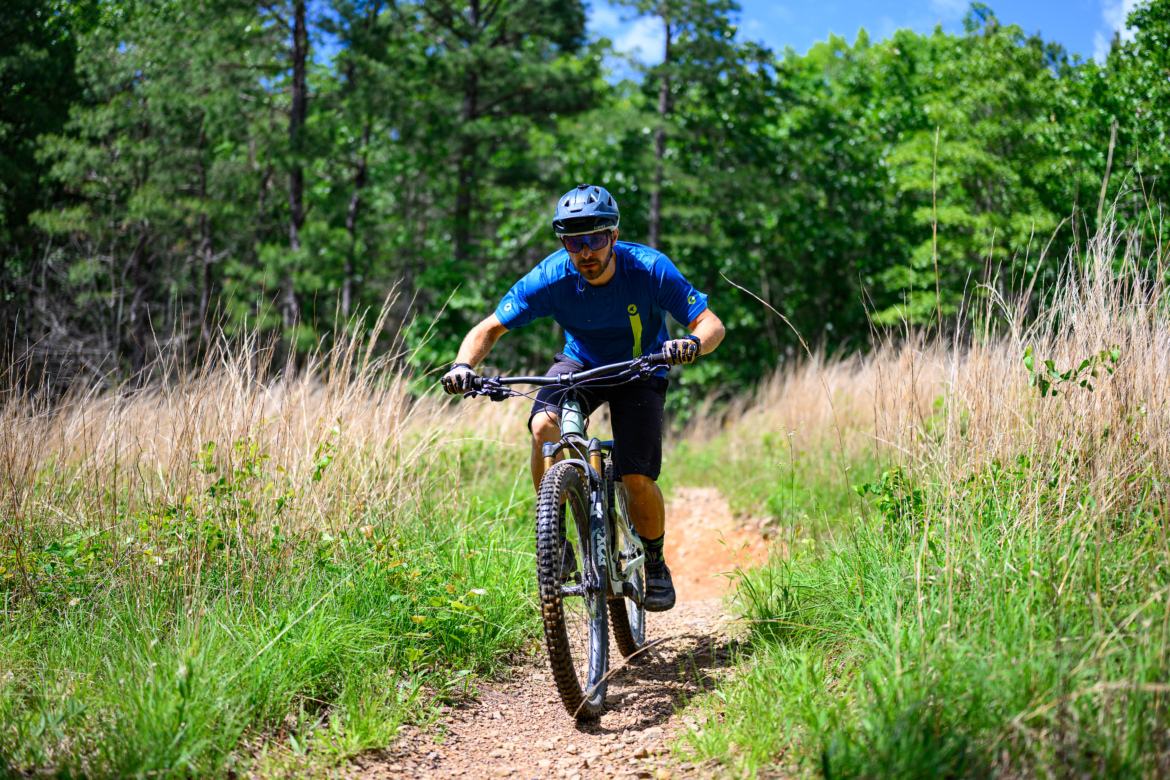
Faster acceleration is readily apparent, with no noticeable side effects
During the test, I switched back and forth between my Trailcat, my Switchblade, and my Pivot Vault gravel bike with 172.5mm cranks. The 160mm cranks on the Trailcat are noticeably faster to spin up to speed than either of my cranksets. Fast acceleration is useful in many scenarios, especially on trails when you frequently switch between climbing and descending or slow down for obstacles and then speed up afterward.
Notably, the faster acceleration didn’t seem to create any other negative downstream effects. Overall, I’ve been blazing fast on the Trailcat, which, of course, can’t be 100% attributed to the shorter cranks. However, I haven’t felt any negative effects in terms of speed or power while utilizing a shorter lever length.
Short cranks keep your hip more open at the top of the pedal stroke
One reason that short cranks are supposed to help reduce hip pain is that the hip doesn’t close off as much at the top of the pedal stroke. With a proper bike fit, the leg will reach the same extension at the bottom of the pedal stroke on a short crank, but at the top, the crank will come 10mm (170-160mm in this case) shorter, thereby reducing the acuteness of the angle that the hip is forced to endure.
Essentially, the circle that the pedal is spinning has a smaller diameter (and circumference), and that smaller circle is located at the bottom of the previous pedal stroke — not in the center.
I found this sensation to be easily discernible during testing, and can see why this would be a major benefit to those who struggle with hip pain.
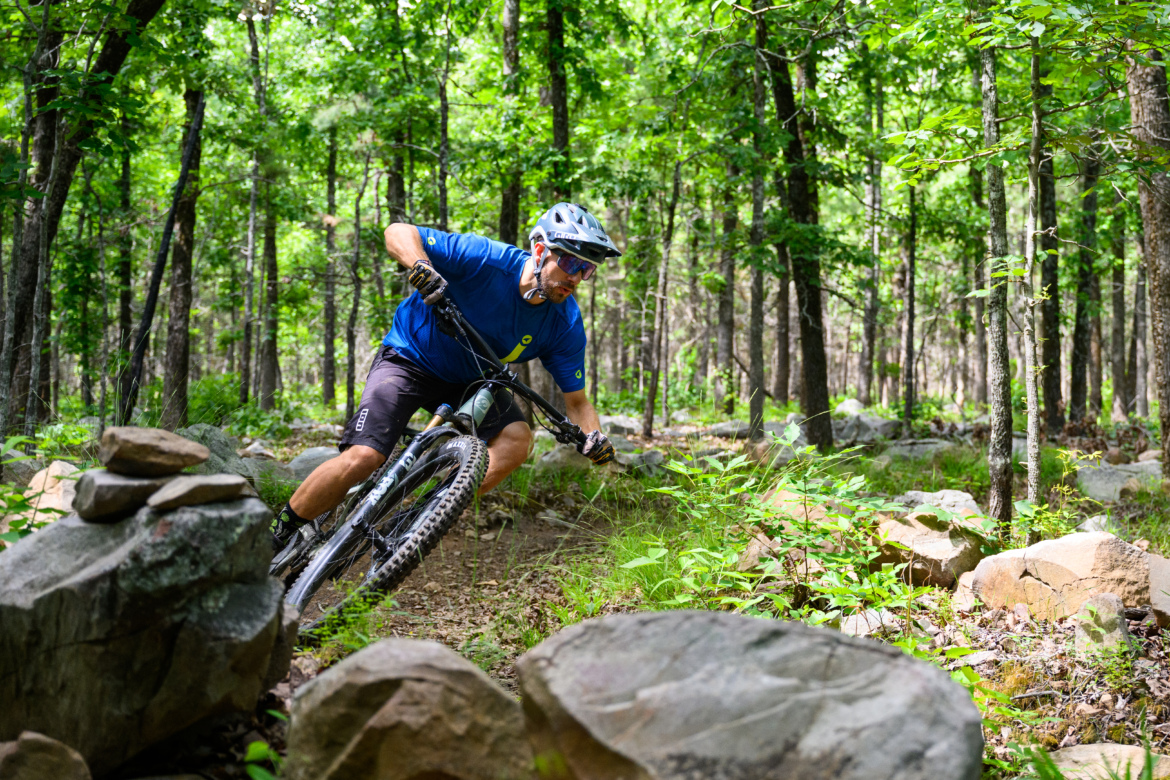
Do shorter cranks reduce knee pain? Test is inconclusive.
My primary motivation for testing these shorter crank arms was simple: my knees hurt. I’ve struggled with knee pain ever since my first ACL surgery in 2016, and I’ve been willing to try every potential solution.
On the surface, the logic makes sense. By shortening the length of the crankarm, you’re reducing the maximum knee flexion angle at the top of the pedal stroke by several degrees, which thereby reduces tension on the patellar tendon and the rest of the joint structures.
But here’s where the theory breaks down.
If, for example, you’re pedaling on a fast section of trail (or on a road) and you have the choice to either 1) spin faster and push more lightly or 2) push harder but at a slower cadence, you can often achieve the same overall speed through either strategy. However, one of the two is radically easier on the knee: spinning at a higher cadence.
The problem with mountain biking, especially in the big mountains, is that often, while climbing, riders will find themselves in their lowest gear, grinding slowly uphill. In this scenario, you don’t have the choice of spinning faster. The two choices are walk or ride. Once you get down to your lowest gear, you’re still going to be putting incredible force through the knee joint as you battle your way up thousands of feet of steep mountainside, regardless of how long the crankarm is and what the maximum flexion angle is.
To help my knees as much as possible, I always run a 30T chainring to increase my odds of spinning instead of grinding. And yet, if you live in Colorado or another mountainous area, you’re inevitably going to have to grind if you want to tackle the big epics. In this scenario, I remain unconvinced that a shorter crank offers a dramatic reduction in knee pain. Sure, it might play a small role… but based on my testing, I’m not convinced that it’s a big one.
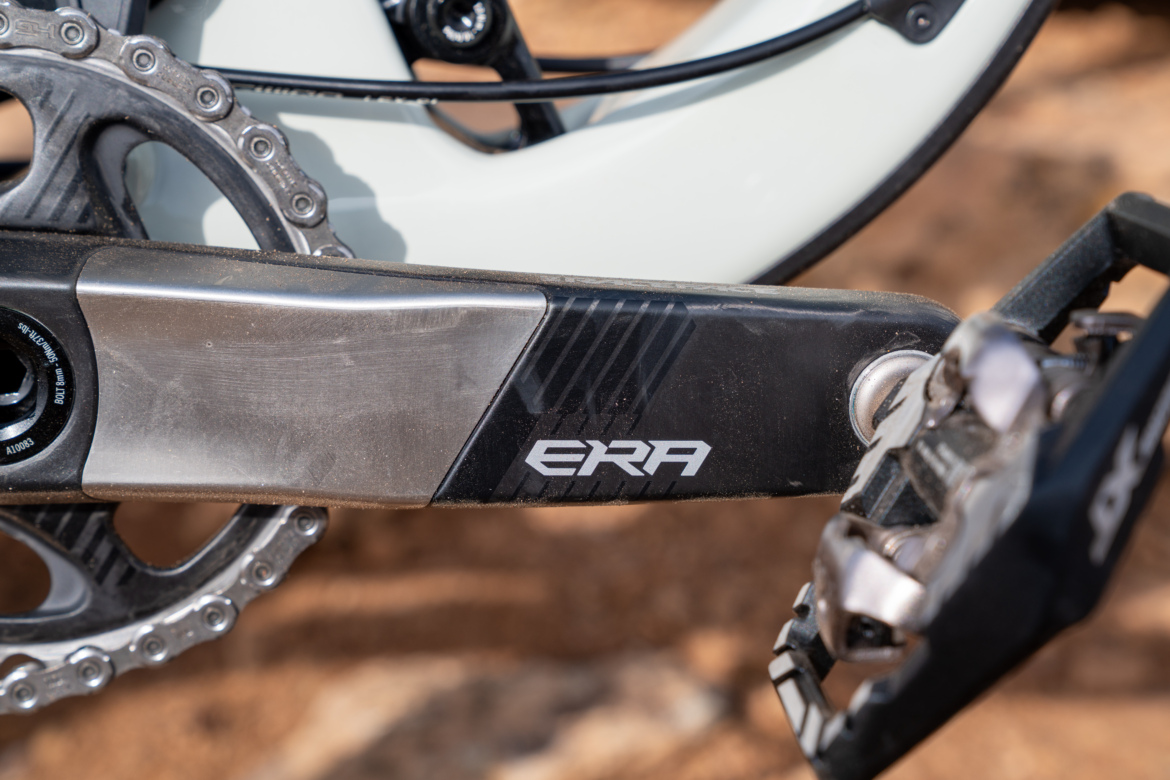
Pros and cons of the Race Face Era mountain bike crankset
Pros
- Beautiful construction
- The right material for the job: steel in all the right places, and carbon everywhere else
- Tons of crank length choices, including 160mm
Cons
- Expensive, proprietary chainrings
Bottom line
Race Face’s new Era carbon crank is both a work of art and a workhorse, all at the same time. If you’re looking for a high-end crank with no performance sacrifices in sight, look no further.
While the 160mm Era didn’t prove to be the knee pain relief panacea that I had hoped for, the other benefits of shorter cranks, such as fewer pedal strikes and faster acceleration, were noticeable and much appreciated. At the same time, I found little to no downsides to running the shorter cranks.
All upside and no downside? I’ll take that deal every day.




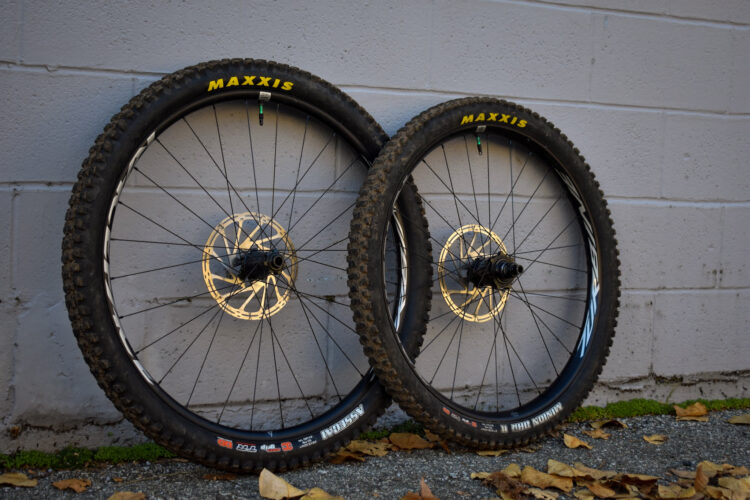
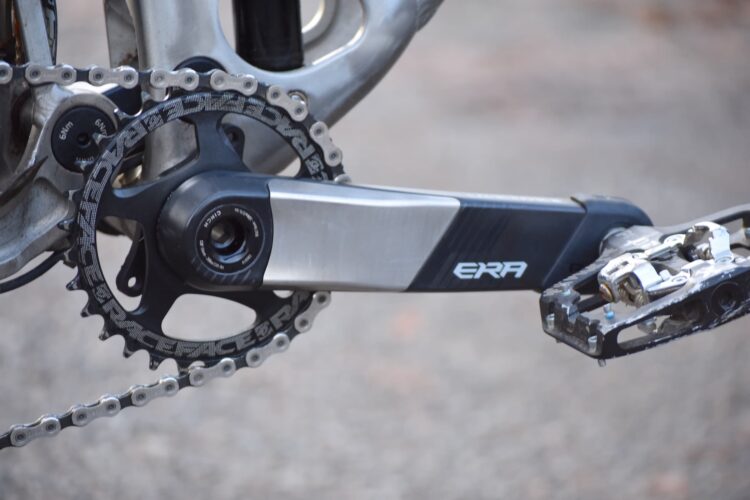
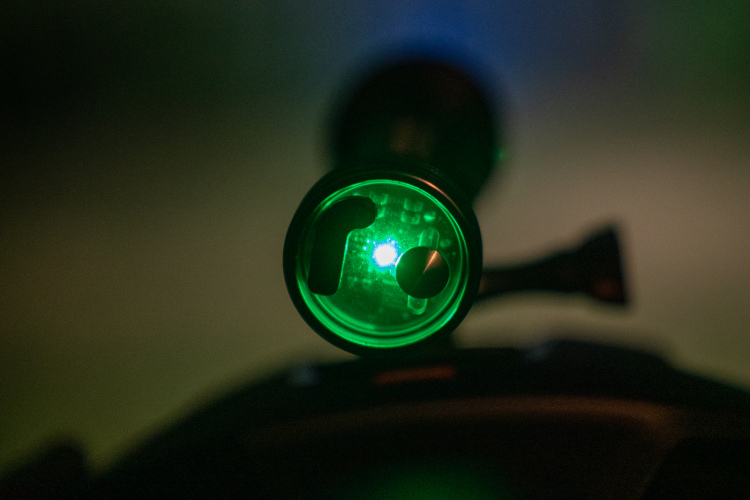
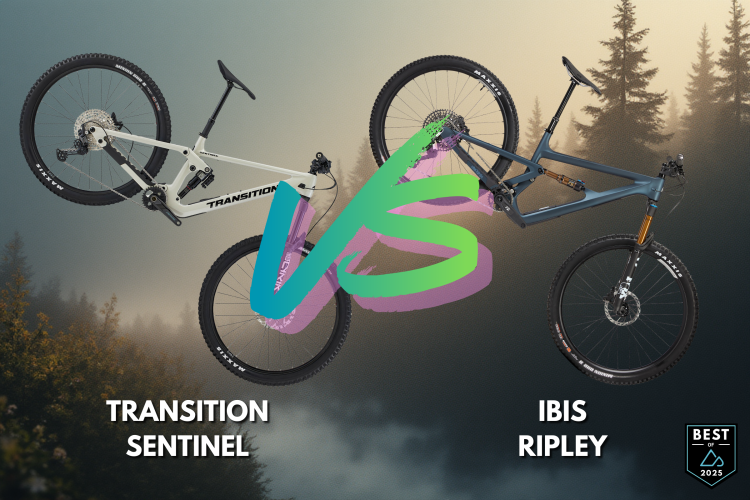
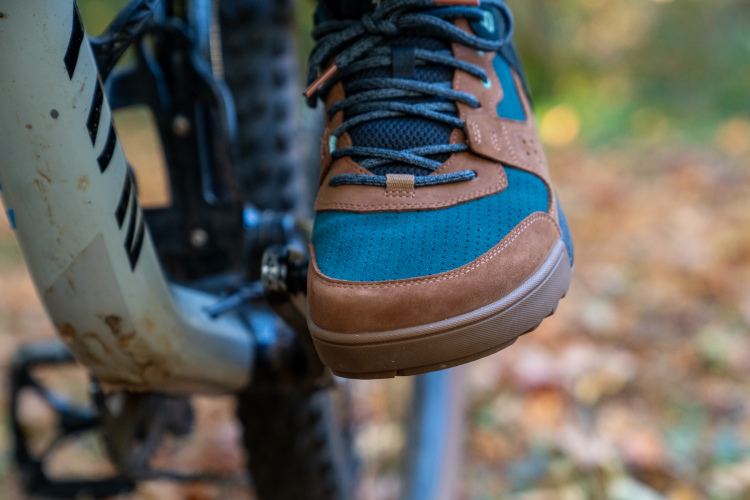
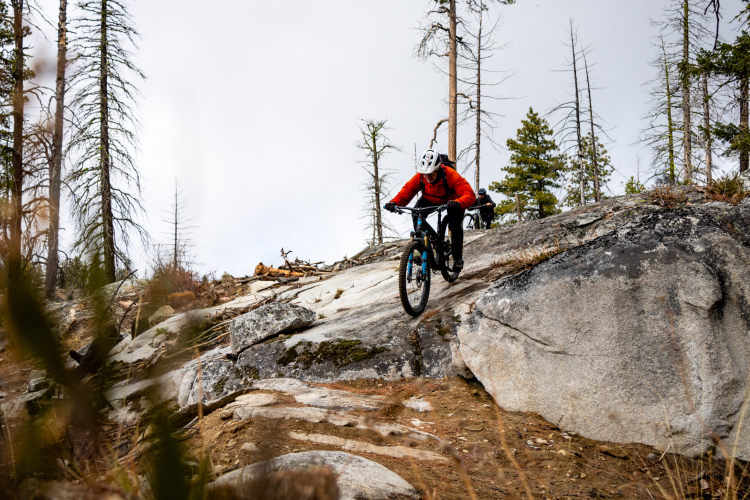

24 Comments
Jul 12, 2025
Jul 15, 2025
Jul 14, 2025
Jul 14, 2025
Jul 14, 2025
Jul 14, 2025
No, it's definitely still concentric. If you raised your saddle, as early on was often stated as a requirement for shorter cranks, then yes the effective center relative to you hips & knees is lower. But you didn't mention moving your saddle, and hopefully didn't do it because you thought you had to, but did it because you could after riding the short cranks for a bit. The usual "almost straight knee" position for bottom dead center works because with 170mm cranks, the average male rider ends up with a reasonable knee flex at the top. With shorter cranks, especially somewhat proportional to leg length, you can go much lower with the saddle before overly flexing the knee or hip. Therefore, you should leave you saddle alone when trying shorter cranks, and raise it only if you feel like you need to. But you probably won't find that, because even without moving it you get less knee and hip flex at top dead center. And since the power zone or around 2 o'clock to 4 o'clock mostly depends on BB to saddle distance, there really is no reason to raise the saddle.
(Wording might be weird, mobile browser is not letting me expand the text box to make editing easier)
Jul 22, 2025
Jul 15, 2025
On the ebike build in planning to go 165.
Jul 14, 2025
Jul 13, 2025
Shorter legs might benefit with shorter cranks while, longer legs will have no issue with longer cranks.
My 36" inseam makes the use of a longer lever possible and creates torque far easier than a short lever ever will. Basic physics.
Jul 13, 2025
Jul 14, 2025
Jul 13, 2025
So in that respect, the benefits are the same for everyone.
This is the reason I switched to 170mm cranks on my mtb, even though I am 6’5” with long legs.
As far as biomechanics goes, of course it’s relative to rider leg length.
However, as a bike fitter, I would argue that people riding M and smaller size frames, always have too long of cranks as stock.
When we look at being able to pedal smooth circles with stable pelvis, even 170mm cranks are often too long for people under 6’ tall.
These days, for mtb I generally go 160 mm or shorter for people around 5’8”, 165mm for people around 6’ tall.
My daughter, at 5’8” runs 150mm cranks, because the 155mm I wanted to get were sold out. She has been very happy and very fast on them, so I never got her the longer ones.
Jul 15, 2025
Jul 24, 2025
Jul 14, 2025
Jul 13, 2025
Jul 13, 2025
Jul 14, 2025
Jul 20, 2025
And I need to size down my chain ring from 32t (whatever is the standard SRAM chainring) to 30t .
Because I felt I lost the lowest cog by shortening the crank
Jul 13, 2025
Jul 14, 2025
Jul 13, 2025
Jul 13, 2025